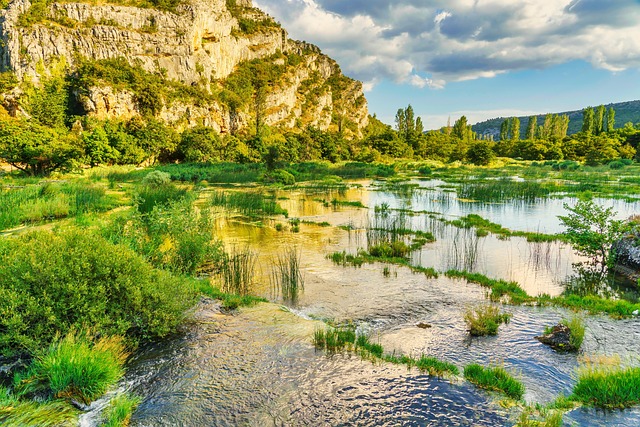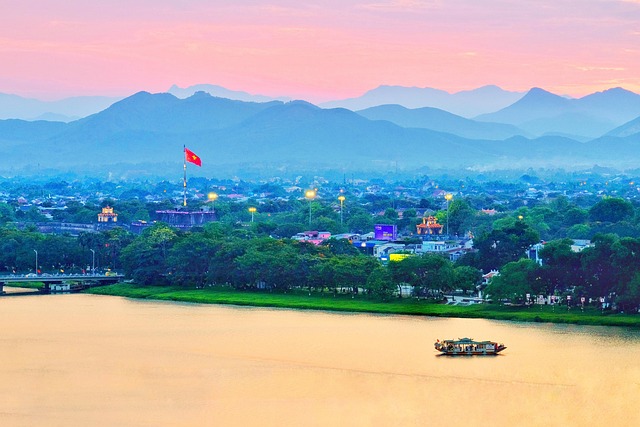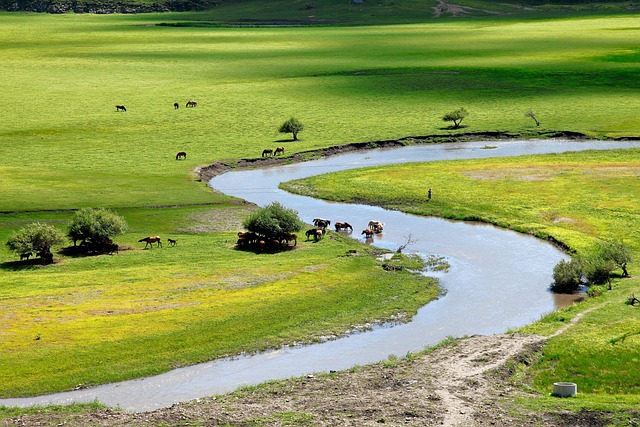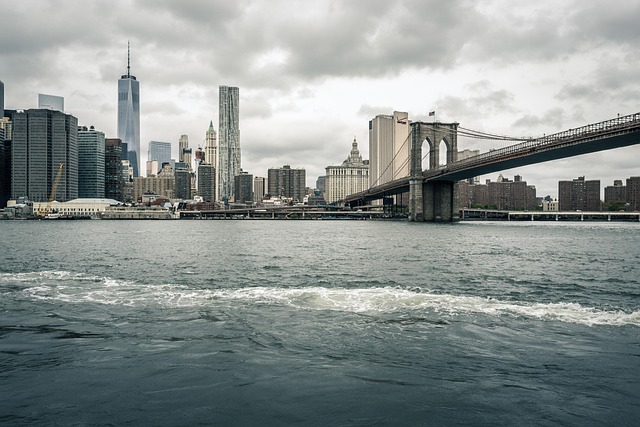Rivers, vital lifelines teeming with diverse wildlife, support intricate ecosystems globally. Human activities like industrialization and urbanization disrupt these ecosystems, threatening species survival. Conservation efforts focus on water quality monitoring and habitat restoration, emphasizing community collaboration. Successful restoration projects restore biodiversity, with community engagement crucial for long-term protection. Despite challenges from human growth, growing conservation awareness offers optimism for preserving river wildlife habitats through strategic collaborations and sustainable practices.
Explore the vital role rivers play in shaping our planet’s ecosystem and discover the delicate balance they maintain for countless species. This article delves into the intricate web of river conservation, examining the impact of human activities on these lifelines and the wildlife they support. From understanding the complexities of river ecosystems to implementing successful conservation strategies, we’ll uncover ways to protect and restore river wildlife habitats. Learn about community engagement, case studies, and future prospects in preserving these essential natural resources.
- Understanding River Ecosystems and Their Importance
- The Impact of Human Activities on Rivers and Wildlife
- Conservation Strategies to Protect River Habitats
- Restoring River Health: Case Studies and Success Stories
- Involving Communities in River Conservation Efforts
- Future Challenges and Opportunities for River Wildlife Habitats
Understanding River Ecosystems and Their Importance

Rivers are vital lifelines for our planet, teeming with diverse wildlife and supporting intricate ecosystems. Understanding these delicate balances is crucial to conservation efforts. From small streams to mighty tributaries, rivers provide critical habitats for countless species, from fish and birds to mammals and reptiles. This biodiversity not only ensures the survival of various creatures but also contributes to the overall health and resilience of the environment.
River ecosystems play a pivotal role in maintaining ecological balance. They serve as breeding grounds, migration routes, and food sources for numerous organisms. The intricate web of interactions between water, sediment, and living beings creates a vibrant tapestry that sustains both local and global environments. Protecting these ecosystems is essential to preserving the rich biodiversity they harbor and ensuring the well-being of river wildlife habitats across the globe.
The Impact of Human Activities on Rivers and Wildlife

Human activities have significantly impacted rivers and their invaluable wildlife habitats. From industrialization to urbanization, various human actions have altered river ecosystems, causing severe ecological imbalances. Deforestation, for instance, not only reduces the river’s natural shade but also diminishes the surrounding habitat for numerous species that depend on these forests for food, shelter, and breeding grounds.
Water pollution, another critical issue, introduces harmful chemicals and pollutants into rivers, affecting aquatic life and disrupting the entire food chain. The discharge of untreated industrial waste, agricultural runoff, and even household chemicals can lead to water degradation, making it unsafe for fish, aquatic plants, and other river wildlife. As a result, many species struggle to survive, migrate to cleaner waters, or face the risk of extinction, highlighting the urgent need for river conservation efforts.
Conservation Strategies to Protect River Habitats

River conservation efforts are crucial in protecting and restoring river wildlife habitats, which are essential ecosystems teeming with biodiversity. One of the primary strategies involves implementing stringent water quality monitoring programs to identify and mitigate pollutants. By setting clear standards for water quality and regularly testing rivers, conservationists can quickly address issues like chemical runoff from agriculture or industrial activities that may harm aquatic life.
Additionally, habitat restoration projects play a vital role in preserving river ecosystems. This includes re-establishing natural river flows by fixing man-made channels, allowing for the regeneration of riparian vegetation, and creating diverse habitats that support various species. Collaboration between local communities, government agencies, and conservation organizations is essential to implement these strategies effectively, ensuring the long-term health and resilience of rivers and their precious wildlife habitats.
Restoring River Health: Case Studies and Success Stories

River conservation goes beyond mere protection; it involves active restoration to revive and sustain river ecosystems, including crucial river wildlife habitats. Successful restoration projects often serve as compelling case studies, offering valuable insights into reversing decades of environmental degradation. These initiatives focus on various strategies such as habitat rehabilitation, water quality improvement, and the reintroduction of native species.
For instance, some regions have seen remarkable results by clearing invasive plant species that choked riverbanks, allowing native vegetation to regrow and provide shelter for fish and other wildlife. Other projects involve rebuilding riparian zones, which not only prevent soil erosion but also create diverse habitats along the river’s edge, fostering a rich ecosystem. These efforts, coupled with community engagement and education, have led to thriving river systems where biodiversity flourishes, showcasing the power of conservation initiatives in revitalizing natural river environments.
Involving Communities in River Conservation Efforts

Involving local communities is a cornerstone of successful river conservation efforts. When folks who live, work, and play near rivers are educated about their ecological importance and unique characteristics, they become powerful allies in preservation. Community engagement fosters a sense of stewardship, encouraging responsible land use practices upstream and downstream. By participating in monitoring programs, cleaning initiatives, and restoration projects, residents directly contribute to the health of river wildlife habitats.
This collaborative approach ensures that conservation strategies are tailored to local needs and respect cultural connections people have with their rivers. When communities lead by example, demonstrating sustainable practices and appreciating the intrinsic value of these water bodies, it paves the way for long-term protection and a harmonious coexistence between humans and rivers.
Future Challenges and Opportunities for River Wildlife Habitats

The future of river wildlife habitats presents both challenges and opportunities. As human populations grow and urbanize, the demand for resources increases, putting immense pressure on rivers and their ecosystems. Deforestation, pollution from industrial activities, and the construction of dams are significant threats that fragment habitats, disrupt migration patterns, and reduce water quality. These factors can lead to the decline or extinction of numerous species dependent on riverine environments.
However, there is also cause for optimism. Growing awareness of the ecological importance of rivers has led to increased conservation efforts worldwide. Restoring and protecting river corridors, implementing sustainable land-use practices, and promoting renewable energy sources offer promising avenues to preserve and enhance river wildlife habitats. Collaboration between governments, non-governmental organizations, and local communities is essential to addressing these challenges effectively and ensuring a thriving future for river ecosystems.
